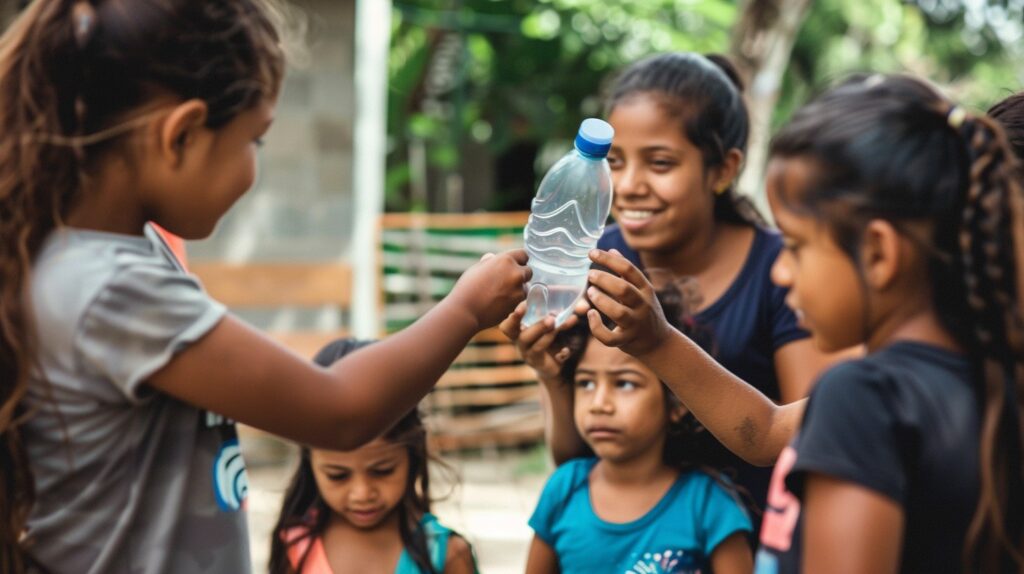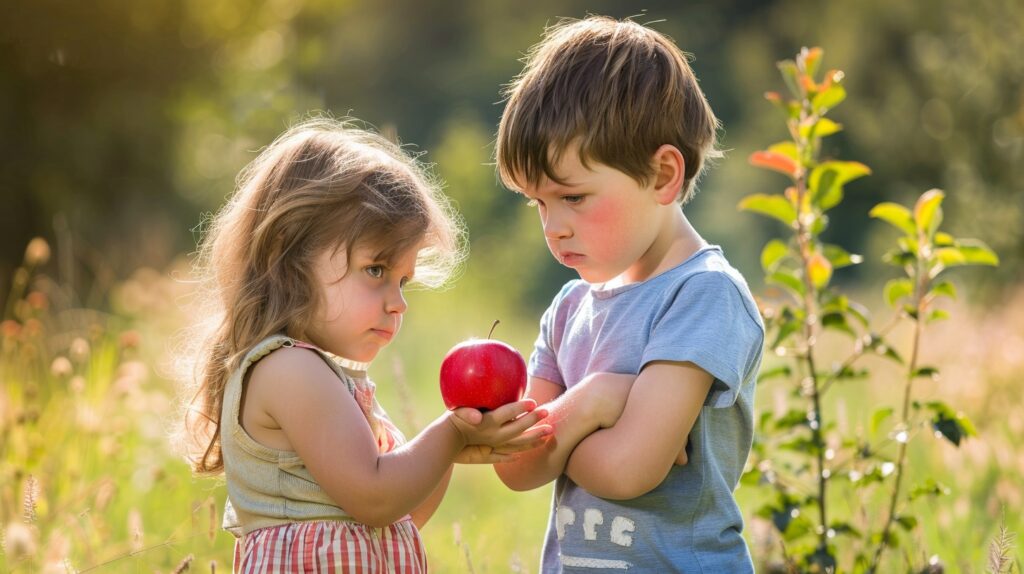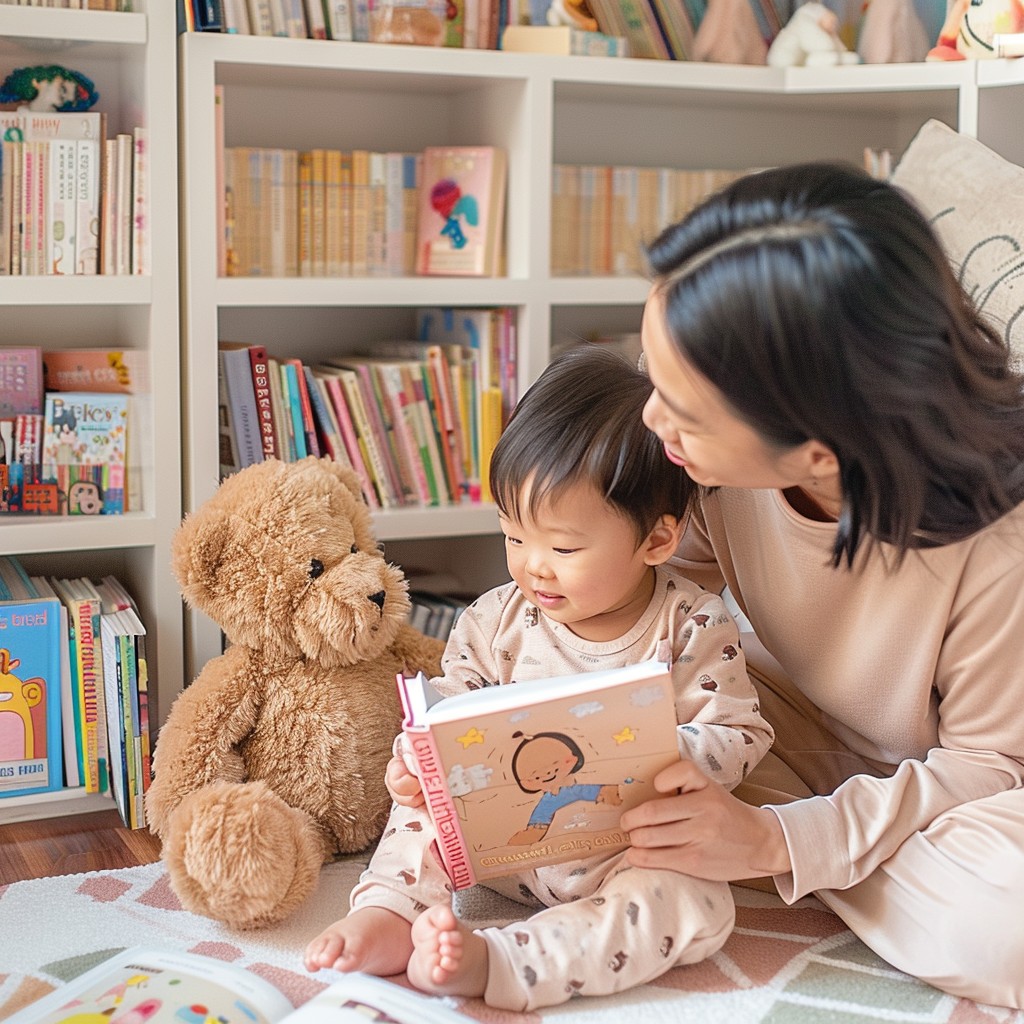Empathy might seem like a big concept, but it’s one of the most important skills your child can learn. When kids understand and share the feelings of others, it helps them build stronger friendships, navigate tricky social situations, and become kinder, more compassionate people.
Teaching empathy isn’t just about encouraging nice behavior—it’s about helping your child connect with others on a deeper emotional level. When they can recognize and respond to the emotions of those around them, they’re better equipped to handle conflicts, offer support, and make thoughtful decisions.
In this article, we’ll break down what empathy really means, why it’s essential for your child’s development, and how you can foster it in everyday life. Whether through playful activities or real-world situations, you’ll learn practical tips to teach your child the importance of understanding and caring for others.

What Is Empathy and Why Does It Matter?
Empathy is all about understanding how someone else feels — like stepping into their shoes for a moment. It’s not just about noticing when someone’s upset or happy, it’s about really feeling it with them. When kids learn empathy, they become more emotionally aware, which helps them build better relationships, make friends more easily, and handle tough social situations.
Now, let’s clear up the difference between empathy and sympathy. Sympathy is feeling sorry for someone, while empathy is actually feeling with them. For example, when a friend is upset, sympathy would be saying, “I’m sorry you feel that way,” but empathy is sitting with them, feeling their sadness, and saying, “I get it, I’m here with you.” It’s that deeper connection that makes empathy so powerful.
By helping your child understand empathy, you’re not just making them kinder, but also equipping them with a skill they’ll use throughout their entire life. Whether it’s comforting a classmate who’s had a bad day or celebrating a friend’s success, empathy is the glue that strengthens relationships.
How to Help Kids Tune Into the Feelings of Others
Kids aren’t born knowing how to pick up on other people’s emotions. They need help recognizing and understanding the cues. This is where you come in.
Start by teaching them to read emotional signals. Facial expressions, body language, and tone of voice are great indicators of how someone’s feeling. Point out examples in daily life — “Look, your sister is frowning. How do you think she feels?” This helps them connect emotions with visual cues.
Encourage them to ask questions like, “How do you think they’re feeling?” when they see someone in a certain situation. By getting into the habit of asking these questions, kids start to think more deeply about other people’s emotions instead of just their own.
Also, give them simple scenarios to practice empathy. If a sibling is upset, suggest they ask, “Can I do anything to help?” Or when a classmate is celebrating, have them join in the joy with a compliment. These little moments help build an empathetic mindset, one situation at a time.
The Power of Perspective:
Helping Kids See the World Through Others’ Eyes
Empathy isn’t just about recognizing someone’s feelings. It’s also about understanding why they feel that way. This is where perspective-taking comes in. It’s like looking through someone else’s eyes and seeing the world from their point of view.
To help young kids grasp this idea, start simple. Explain that everyone sees things differently. For example, if someone is upset, ask your child, “How would you feel if that happened to you?” This question encourages them to step outside their own experience and imagine someone else’s feelings.
You can also try role-playing or storytelling to help them practice. Pretend to be someone else, like a friend who’s feeling left out, and ask your child to respond. Or, after reading a story together, ask, “Why do you think that character felt that way?” These exercises help kids practice perspective-taking in a fun, engaging way.
The benefits? Kids who understand different perspectives are better problem solvers and handle conflicts more smoothly. They’re able to navigate tricky social situations with more understanding and kindness.
Turning Empathy Into Action:
Teaching Kids to Show They Care
Empathy doesn’t stop at understanding feelings — it’s about taking action. The real power of empathy lies in how we respond to others.
Show your kids how to express empathy through everyday actions. Encourage them to offer help when they see someone struggling or simply listen when a friend needs to talk. Even small acts, like sharing toys or celebrating a classmate’s success, teach them that empathy can be shown in many ways.
Give them real-life examples to inspire empathy. Maybe they helped a friend who fell on the playground or gave a hug to a sibling who was sad. Remind them that these small, thoughtful gestures can make a huge difference in someone’s day.
Empathy in action teaches kids that kindness matters. When they see the positive impact of their actions, they’ll be motivated to keep showing empathy in big and small ways.
Empathy in the Classroom and Playground
Kids spend a lot of time at school and on the playground, so it’s a perfect place to teach them empathy. Encourage your child to notice when a classmate is struggling—whether it’s with a tough math problem or feeling left out during recess. Talk to them about how lending a hand or offering kind words can make a huge difference.
You can also practice empathy with your child by role-playing different situations. For example, ask how they would feel if they didn’t understand something in class or if no one picked them for a game. These conversations make empathy feel more real and relatable to them.
Teaching Empathy at Home With Siblings
Siblings are a constant source of learning. Sure, they’ll argue (a lot), but those are perfect opportunities to teach empathy. When your kids have a disagreement, pause and help each child express how they feel. Encourage them to listen to each other and understand how their actions may have hurt their sibling. It’s not about avoiding conflict—it’s about learning to handle it with compassion.
Also, show them how to stand up for each other. If one sibling is feeling down or being teased by friends, talk about the importance of support and standing up for someone who’s being mistreated.

Standing Up for Others: Combating Bullying
Empathy goes beyond understanding someone’s feelings—it also means standing up for them. If your child witnesses bullying or exclusion, encourage them to speak up, whether it’s by telling a teacher or supporting the victim. Remind them that it’s important to be kind and stand by those who might need a friend, even if it feels a bit uncomfortable at first.
Empathy in these moments can be a powerful tool in creating a safe, inclusive environment for everyone.
Play Your Way to Empathy: Fun Games for Teaching Compassion
Kids naturally connect with play, so turning empathy lessons into fun activities is a win-win. One great game is “Feelings Charades.” In this game, kids take turns acting out different emotions—like happy, sad, frustrated, or excited—while others try to guess what feeling they’re portraying. This helps them recognize and express emotions in a lighthearted, engaging way.
Another fun activity is “What Would You Do?” Present your child with different scenarios—like seeing a friend upset or a classmate being teased—and ask them how they would respond with empathy. This not only builds their problem-solving skills but also teaches them to consider how their actions affect others.
And don’t forget about storytime. Pick books that feature empathetic characters and read them together. Afterward, discuss the characters’ choices. Ask your child questions like, “Why do you think they helped their friend?” or “How would you have felt in that situation?” These discussions reinforce the message that empathy is an important part of being a good friend and person.
Conclusion
Teaching empathy isn’t just about raising kind kids—it’s about shaping a future generation that values emotional connections and kindness. When kids learn to be empathetic, they become adults who can build stronger, healthier relationships. They also have the tools to make the world a better place by spreading compassion wherever they go.
By weaving empathy into everyday activities, games, and conversations, you can help your child grow into someone who genuinely understands and cares for others. And that’s a skill that will benefit them—and those around them—for a lifetime.

